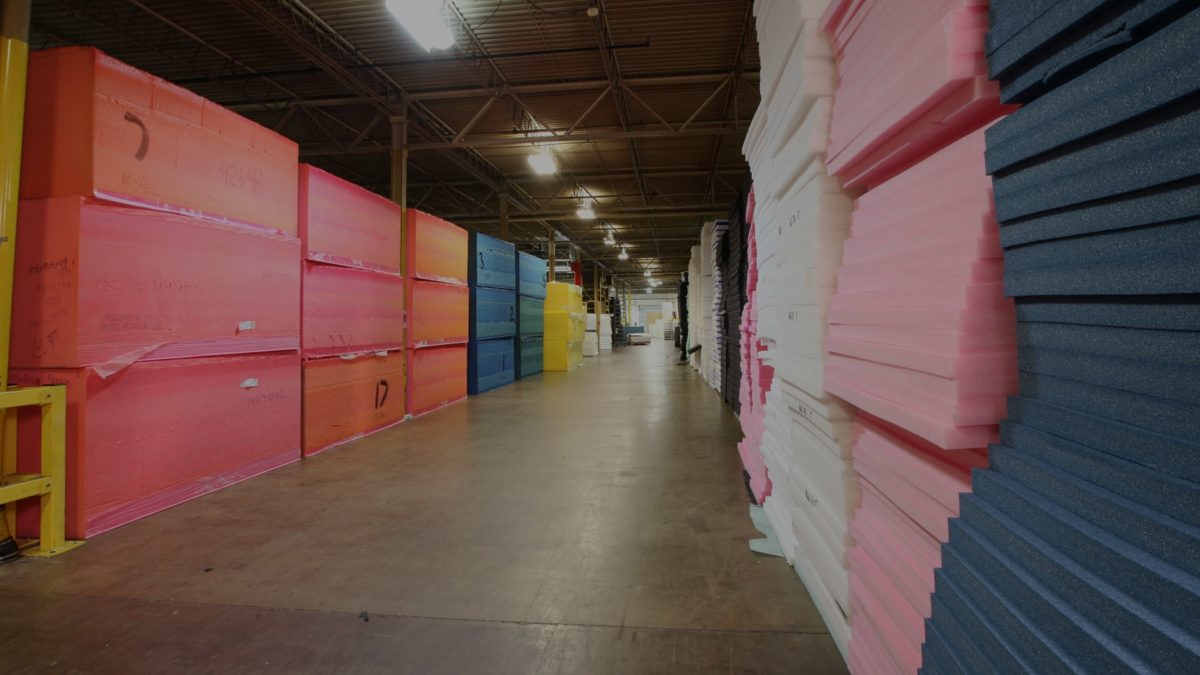Certain liquids—from oils and grease to other solvents—can easily degrade many types of materials. Even water can have a bad impact on materials like foam, saturating and degrading the material until it loses its structural integrity and breaks down. Water can also lead to mold and mildew growth, resulting in unsanitary conditions for workers. That’s why it’s important to choose a water-resistant foam when working with marine and industrial applications as well as certain packaging applications that need the extra protection.
Water Resistant Foams for Marine Applications
The use of water-resistant foam in marine applications contributes to the comfort, safety, and longevity of various vessel components. Whether it’s for sound deadening, seat cushioning, or buoyancy, foam is well-suited for the challenging conditions encountered in marine environments.
Marine Sound Deadening
Closed-cell foams like polyethylene or PVC foam have low water absorption and good buoyancy, making them ideal for use in conditions where water exposure is almost certain. These types of foam are generally installed in areas where noise and vibrations need to be reduced, like engine compartments, hulls, and other spaces where machinery noise is prominent.
Marine Seat Cushioning
Water-resistant foams with closed-cell structures are preferred for seat cushioning applications because they prevent water absorption that degrades the materials over time. These foams are also chosen for their ability to provide comfort while maintaining their durability. They also resist mold and mildew growth that can result from excess moisture and humidity.
Marine Buoyancy Aids
Many types of closed-cell foams have buoyancy capabilities on top of water resistance, allowing them to be used in life vests, buoys, and other flotation devices on boats. These types of foam comply with safety standards and industry regulations.
Common types of water-resistant foams used in marine applications include:
- Polyethylene foam (PE)
- Cross-linked polyethylene (XLPE)
- Polystyrene
- Neoprene rubber
- Polypropylene foam
- Expanded polypropylene foam
Water Resistant Foams for Packaging Applications
Water resistance can also be a vital component of packaging for certain products. Depending on the product specifications and testing, as well as the protection needed for shipping or storage, certain foams may be the best solution for the packaging used.
Some types of the most common types of water-resistant packaging foam include:
Polyethylene Foam
Polyethylene foam is a closed-cell foam, which means its structure is less permeable to water. It provides excellent cushioning and impact resistance. Polyethylene foam can be used in applications where moisture resistance is crucial, like electronics, etc.
Polyurethane Foam
Polyurethane foam can be formulated as a closed-cell foam, offering resistance to water absorption. It also provides good shock absorption and is versatile in various packaging applications.
Crosslinked Polyethylene (XLPE) Foam
XLPE foam is a type of polyethylene foam that has been chemically crosslinked to enhance many of its properties. It is normally a closed cell foam that exhibits improved resistance to water and chemical solvents.
EVA Foam (Ethylene Vinyl Acetate)
EVA foam is a closed-cell foam with water-resistant properties. It’s a type of closed-cell foam made from a copolymer of ethylene and vinyl acetate, and it’s known for its flexibility, durability, and resistance to moisture.
Neoprene Foam
Neoprene foam, also known as polychloroprene, is a closed-cell foam with good resistance to water and other liquids. It is commonly used in gasketing applications where water resistance and flexibility are crucial, but it can also be used as packaging for products sensitive to water.
Closed-Cell Polypropylene Foam
Closed-cell polypropylene foam is inherently resistant to water absorption. It provides good protection against moisture, making it suitable for various packaging applications. This type of foam is often used in medical and electronic packaging.
Is water resistance crucial for your foam application? Get in touch with our foam experts today to choose a foam that works for you!


